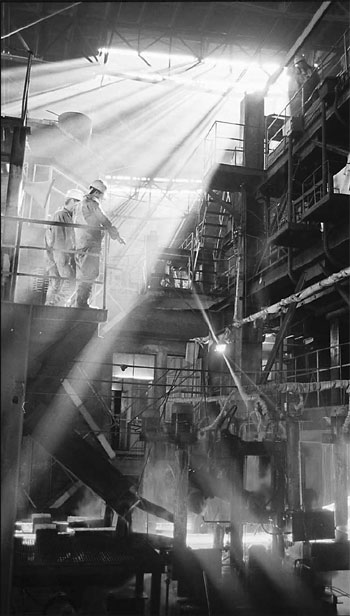Business
Industry steels itself for change in next 5 years
Updated: 2011-02-22 07:53
By Du Juan (China Daily)
|
A view of a steel factory in Tangshan, Hebei province. Analysts said a developmental trend in China will see steel mills being relocated to coastal areas because of financial and environmental considerations. Provided to China Daily |
Production to move to coastal areas as sector embarks on economy drive
BEIJING - The China Iron and Steel Association (CISA), the nation's steel lobby said on Monday that steel mills in north and northeastern China should stop enlarging their production capacities during the 12th Five-Year-Period (2011-2015), as the industry prepares for large-scale changes.
Analysts said a developmental trend in China will see steel mills being relocated to coastal areas for financial and environmental reasons.
Zhang Lin, a senior analyst from Beijing Lange Steel Information Research Center, said China is learning a lesson from the major economies, and is now planning to move the industry to the coastal areas from inland regions .
"The move will be beneficial to the environment because steel production is a process which consumes huge amounts of water. Under the pressure of fewer resources and worsening environmental pollution, it is wise to make this change," said Zhang.
She added that the move will provide savings for the steel companies in the importation of equipment.
"The companies used to spend a lot on transporting the imported equipment inland. However, if the mills are located on the coast and close to ports it will be more convenient and economical," she said.
According to the Lange Steel Information Research Center, North China's steel mills produced a total of 170.89 million tons in 2010, accounting for 27.26 percent of the national industry's production.
Zhang said north and northeastern China have long been the key production bases, and their production capacity is already big enough to meet targets.
It is part of a strategic plan to move production to the coastal areas to ensure the sustainable development of the industry.
Shougang Group, formerly the largest steelmaker in Beijing, moved its production facilities to Caofeidian Port in Hebei province in January. Zhang said the mills in Caofeidian are conducting research on the desalination of seawater for industrial use, a development, which if realized, will prove profitable for the industry.
CISA has also asked steelmakers to diversify their range of products, and contribute more towards the development of high-speed railways, urban metro lines, oceanographic engineering, off-shore oil exploration and the renewable-energy industries.
Deng said the companies should make greater efforts in new product research and development in order to reduce imports and satisfy the requirements of the domestic equipment market.
However, Zhang believes that there is still a long way to go.
She said most medium-sized mills don't have the ability to produce goods for industries such as high-speed railways because of technological limitations.
"Baosteel might produce some products for the wind-power industry from time to time, but would be unable to transform itself entirely for mass production in that market, because of a lack of production experience and the time and money required to develop the new technology."
In a separate development, Deng Qilin, the chairman of CISA, said the construction of new steel mills in Zhanjiang in Guangdong province and Fangcheng Port in the Guangxi Zhuang autonomous region will be completed in the next five years.
China Daily
Specials

Spring Festival
The Spring Festival is the most important traditional festival for family reunions.

Top 10
A summary of the major events both inside and outside China.

A role model
Alimjan Halik had been selected as the "Cyberspace Personality Who Moved the Hearts of the Chinese in 2010".
